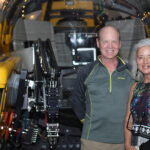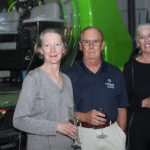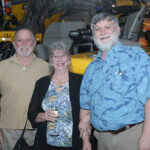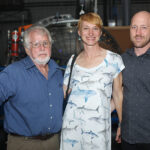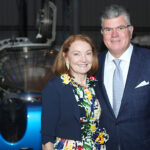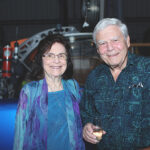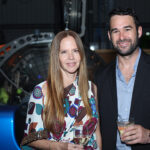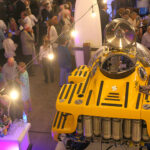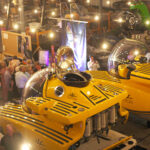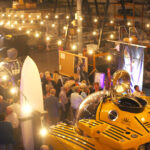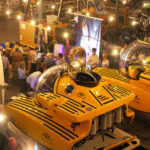
Jules Verne’s Captain Nemo would have felt right at home at the recent Explorer’s Experience at Triton Submarines to benefit the Ocean Research and Conservation Association and support its goal of protecting our Indian River Lagoon, a vital estuary for ocean marine life.
“This evening is all about exploration, and we’re incredibly grateful to Triton submarines for allowing us to share their facilities,” said Edith (Edie) Widder, Ph.D., ORCA founder, CEO and senior scientist.
“Our planet is the only one in the entire universe, that we know of, that can sustain life. We know the ocean plays a key role in making that possible. That’s why when searching for life on other planets, we’re focusing on those with oceans. Yet, incredibly, we’ve hardly begun to explore our own ocean.”
In 2012, Widder was part of a team of scientists who captured a video of a giant squid for the very first time. They dove in a Triton sub using a specialized camera system she developed and a lure resembling a bioluminescent jellyfish.
“Nobody had ever filmed the giant squid. And we didn’t just catch a glimpse of it. We filmed it for 22 minutes,” said Patrick Lahey, president of Triton Submarines, recalling a scientist on that dive who had studied the giant squid his whole life but had never seen one. “He wept, because it affected him so powerfully.”
Closer to home, she said ORCA, whose tagline is “Mapping pollution, finding solutions,” is focused on “understanding the machinery of life in what was once called the most biologically diverse estuary in the United States, the Indian River lagoon.”
Widder explained that the marine life that spawns in estuaries can have an enormous impact oceans’ wellbeing as well as our own health and economy.
Lahey met Widder at Harbor Branch Oceanographic Institute, and said she recognizes the value of using human occupied vehicles to explore the unknown.
“The experiences you have in these human occupied vehicles are profound; it is something that stays with you,” said Lahey. “I think that real-time observation is a critical part of understanding our world and, hopefully, implementing changes.”
Although their subs are primarily built for private yachts, he said owners sometimes allow them to be used for scientific research. Their first sub, a two-seater that goes to 1,000 feet, was built in 2007 for a man who “took a chance that we weren’t crazy.” Their largest is the deepest diving sub in the world, capable of going to 11,000 meters.
Among the important documentaries filmed using the subs are David Attenborough’s Our Blue Planet and National Geographic’s ‘Welcome to Earth.’ “It’s a different planet down there,” says Will Smith in the film. In 2023, another National Geographic series will feature Widder filming bioluminescence aboard a Triton submersible.
Throughout the evening, guests viewed photos and videos of creatures from the deep and perused an array of nautically themed auction items, while enjoying cocktails and hors d’oeuvres before later relishing a scrumptious buffet catered by Elizabeth D. Kennedy.
For more information, visit TeamORCA.org.
Photos by Kaila Jones


